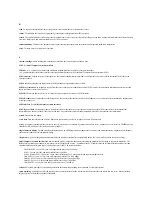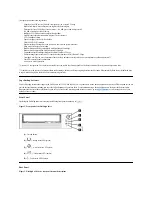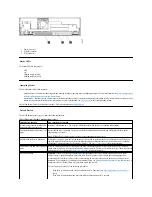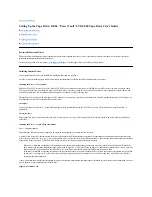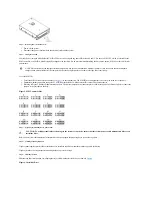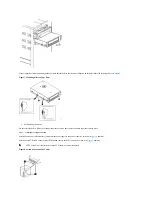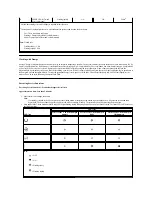
the drive's head.
log sense data.
See
SCSI log sense data
.
loop.
(1) A series of instructions that is repeated until a terminating condition is reached.
(2) To connect so as to complete a loop.
Low Voltage Differential (LVD).
A low-noise, low-power, and low-amplitude electrical signaling system that enables data communication between a supported
server and the tape drive. LVD signaling uses two wires to drive one signal over copper wire. The use of wire pairs reduces electrical noise and crosstalk.
LTO.
See
Linear Tape-Open
.
LVD.
See
Low Voltage Differential
.
M
magnetic tape.
A tape with a magnetizable surface layer on which data can be stored by magnetic recording.
maintenance mode.
The state of operation in which the tape drive must be before it can run diagnostics, verify write and read operations, verify a suspect tape
cartridge, update its own firmware, and perform other diagnostic and maintenance functions.
MB.
See
megabyte
.
media.
The plural of
medium
.
medium.
A physical material in or on which data may be represented, such as magnetic tape.
megabyte (MB).
1,000,000 bytes.
N
network.
A configuration of data processing devices and software that is connected for information interchange.
O
oersted.
The unit of magnetic field strength in the unrationalized centimeter-gram-second (cgs) electromagnetic system. The oersted is the magnetic field strength in the
interior of an elongated, uniformly wound solenoid that is excited with a linear current density in its winding of one abamper per 4 pi centimeters of axial length.
offline.
The operating condition that the tape drive is in when the server's applications cannot interact with it.
online.
The operating condition that the tape drive is in when the server's applications can interact with it.
Open Systems.
Computer systems whose standards are not proprietary.
operating environment.
The temperature, relative humidity rate, and wet bulb temperature of the room in which the tape drive routinely conducts processing.
P
parity.
The state of being even-numbered or odd-numbered. A parity bit is a binary number that is added to a group of binary numbers to make the sum of that group
always odd (odd parity) or even (even parity).
parity error.
A transmission error that occurs when the received data does not have the parity that is expected by the receiving system. This usually occurs when the
sending and receiving systems have different parity settings.
port.
(1) A system or network access point for data entry or exit.
(2) A connector on a device to which cables for other devices such as display stations and printers are attached.
(3) The representation of a physical connection to hardware. A port is sometimes referred to as an adapter; however, there can be more than one port on an adapter.
power connector.
Located at the rear of the tape drive, the connector to which the internal power cable of an enclosure connects.
power cord.
A cable that connects a device to a source of electrical power.
power-off.
To remove electrical power from a device.
power-on, powered-on.
(1) To apply electrical power to a device.
(2) The state of a device when power has been applied to it.
Summary of Contents for PowerVault LTO-3-060
Page 32: ......






